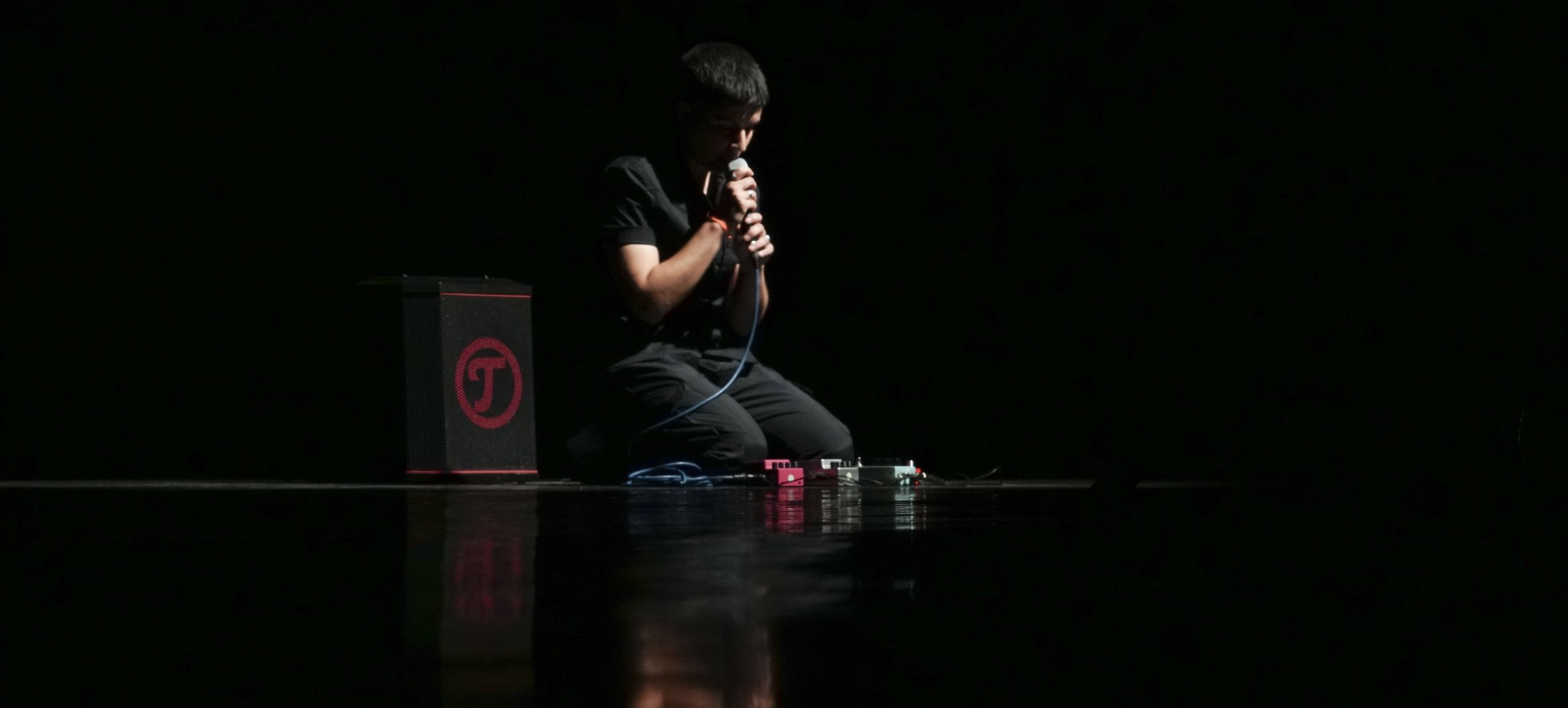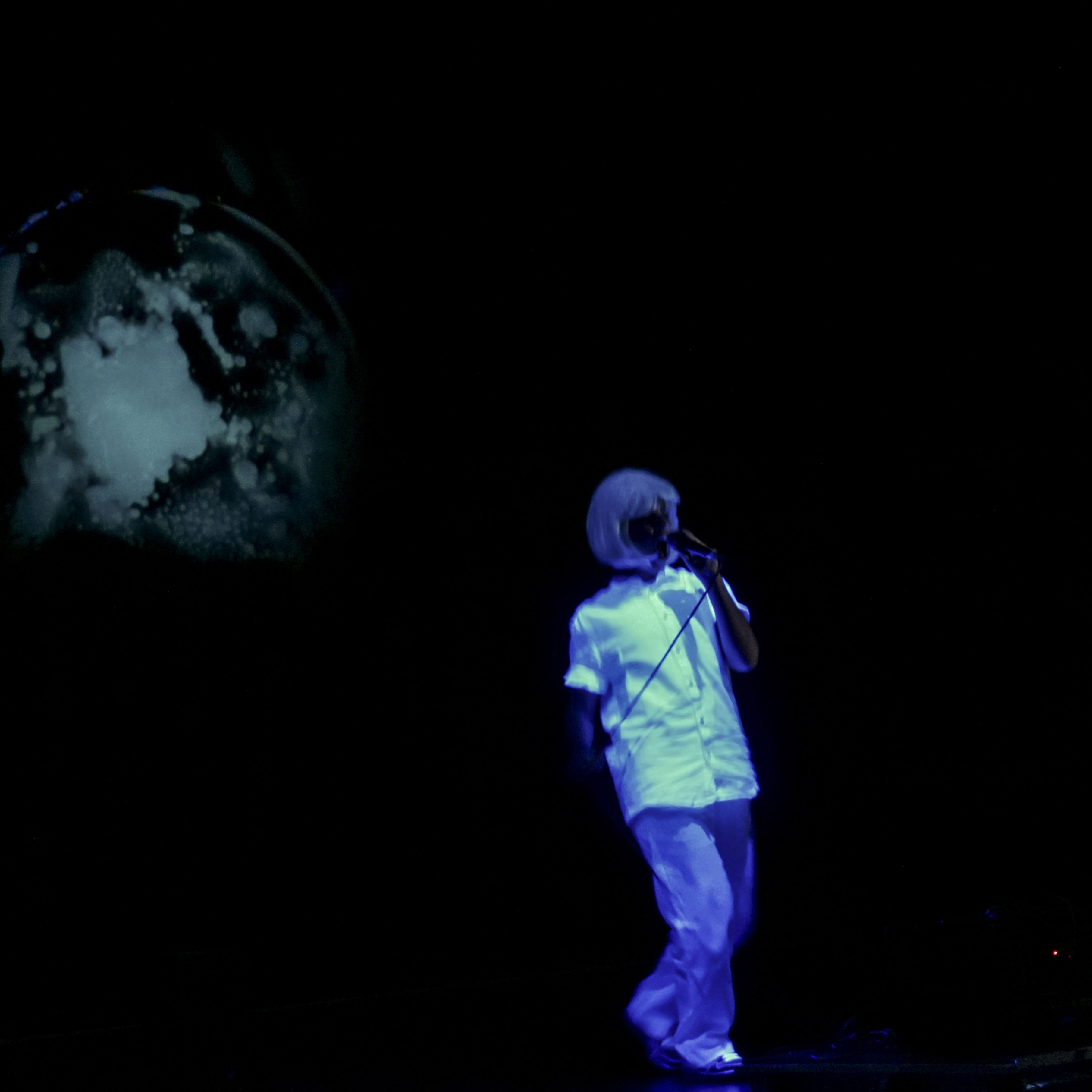Visualising the voice in no man's land
- Dance
- Theatre
When you listen to someone's voice without seeing them, do you form an image of them? Their gender, body characteristic, or even their mood and character? The answer is likely yes. A voice carries social connotations and gender norms within it. However, what if we start playing with these expectations? What remains? And how would the voice appear when visualized in its stripped-down form? That is precisely what Ermis Christodoulou, a master's student Performance Practices, explored in his finals research. Ermis shares how his scientific background, experiences as a transgender individual, and two years at the Home of Performance Practices have shaped his graduation project.

The voice in a synthetic lanscape of sounds and images
Ermis, with a background as a chemist, approaches things from a unique perspective. "As a research chemist, I very often work with substances that are not visible to the eye. The process of zooming into microscopic scales and subtracting data is something that I bring with me, and I’m hoping to create a toolkit that combines scientific and artistic methodologies. For my current project, I delve into the micro-world of imperceptible vocal vibrations, capturing and magnifying the visual patterns they create." Ermis employs various media for this purpose. "My graduation work, trans-mission, is a mixed-media performance. It unfolds in a theatrical setting, featuring a science fiction-like scenario where I transform my voice into a synthetic landscape of sounds and images."
How the voice is perceived when it reaches the listener's ear is bound by complex socio-political norms. The no man's land between the mouth and the ear is an intriguing space to explore."

For Ermis, the master's course has revolved around merging the seemingly contrasting worlds of science and art, while incorporating his lived experience as a transgender person. "My graduation project is the artistic outcome of an auto-ethnographic practice-based research on the transgender experience in relation to the voice. The voice became my material, and from a personal object of self-identification, it turned to the object of study and the artistic medium.”
“I gained confidence in sharing my story”
The subject resonated with his lecturers and peers at the course as well. “I am grateful for the people who have been there for me along the way. The creative process can be very vulnerable, especially with such a personal project. But through the interest, support, and feedback I have received, I gained confidence in sharing my story." For Ermis, this is an ongoing research journey. "I'm far from done with this subject."
Follow Ermis


